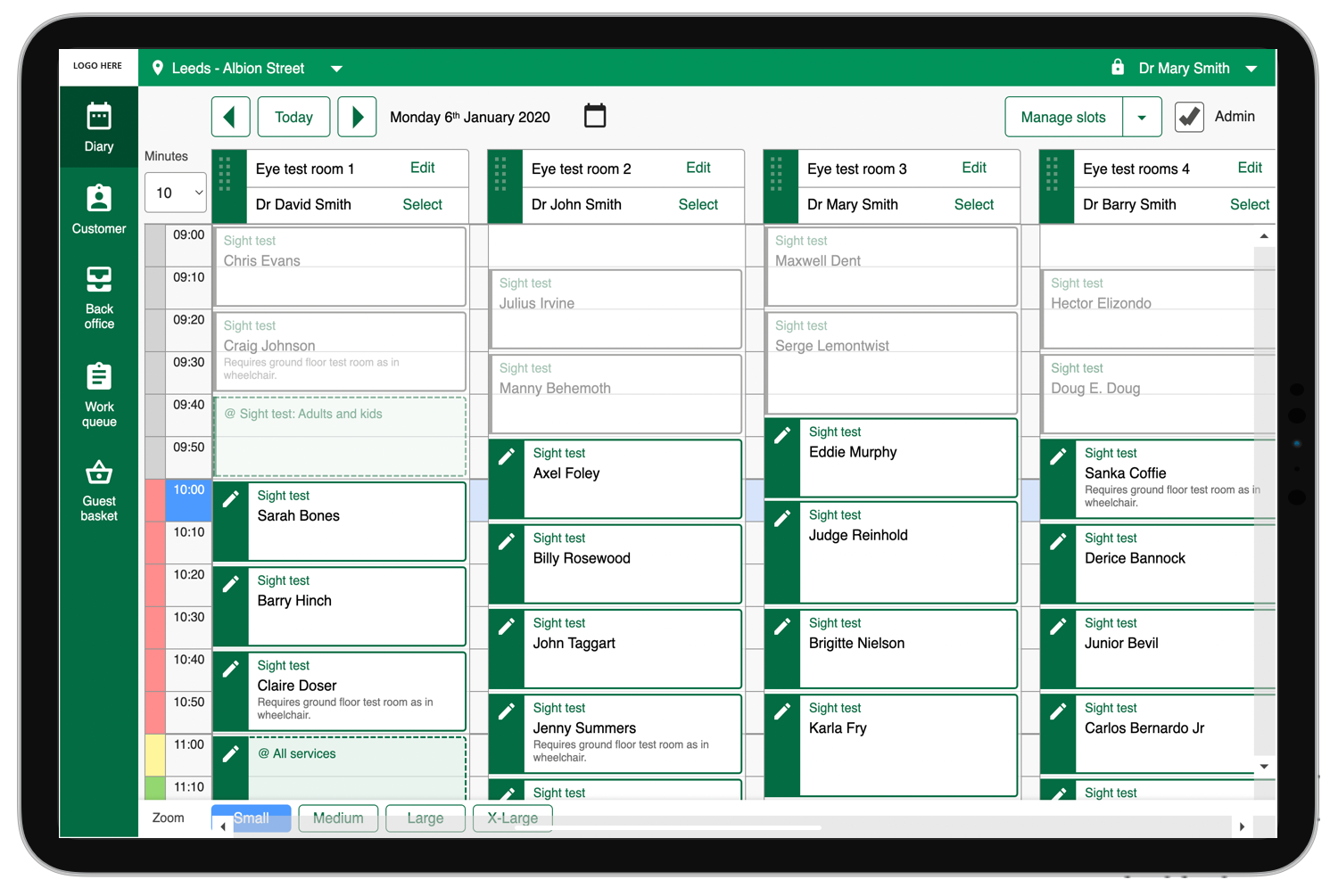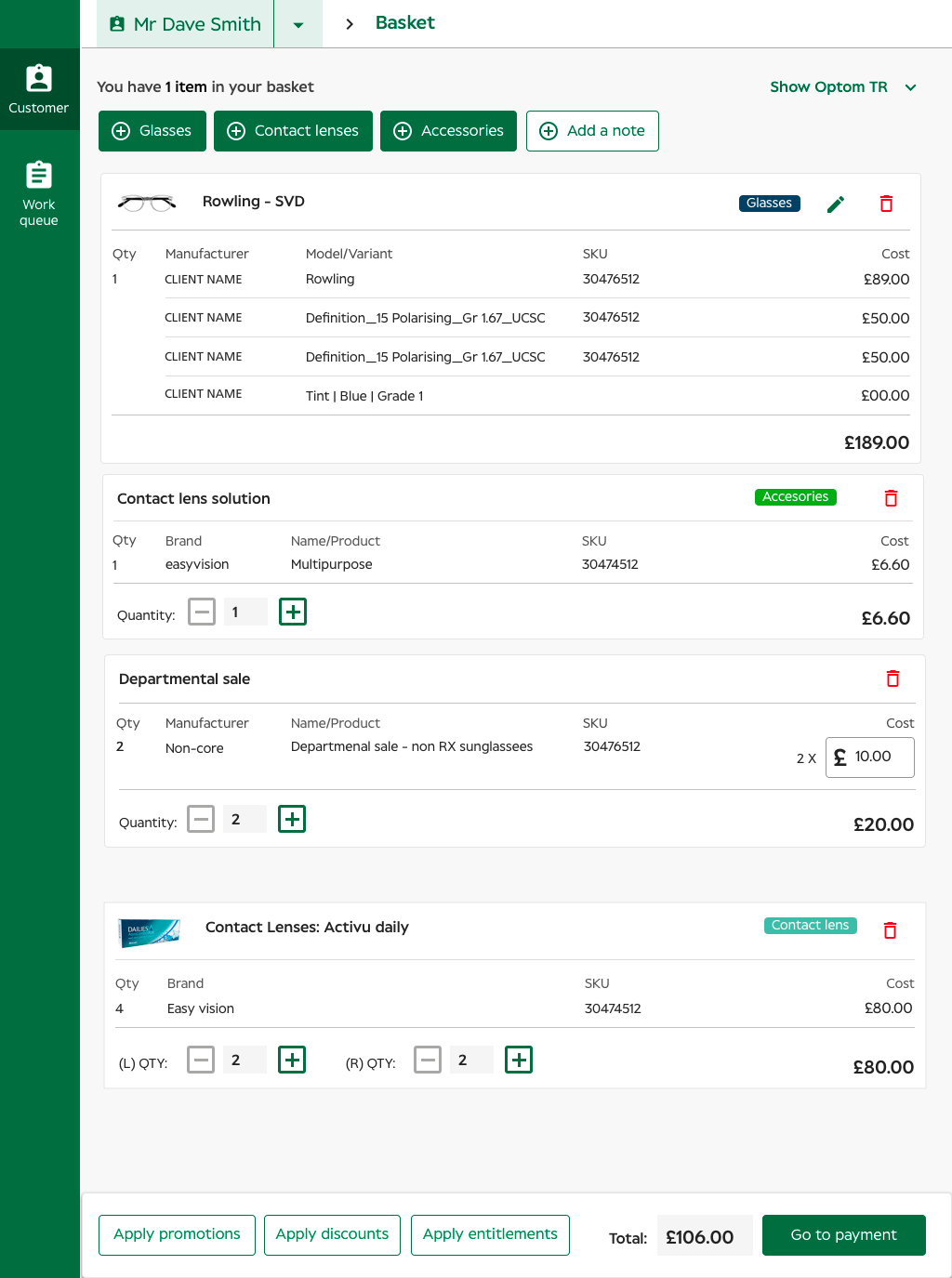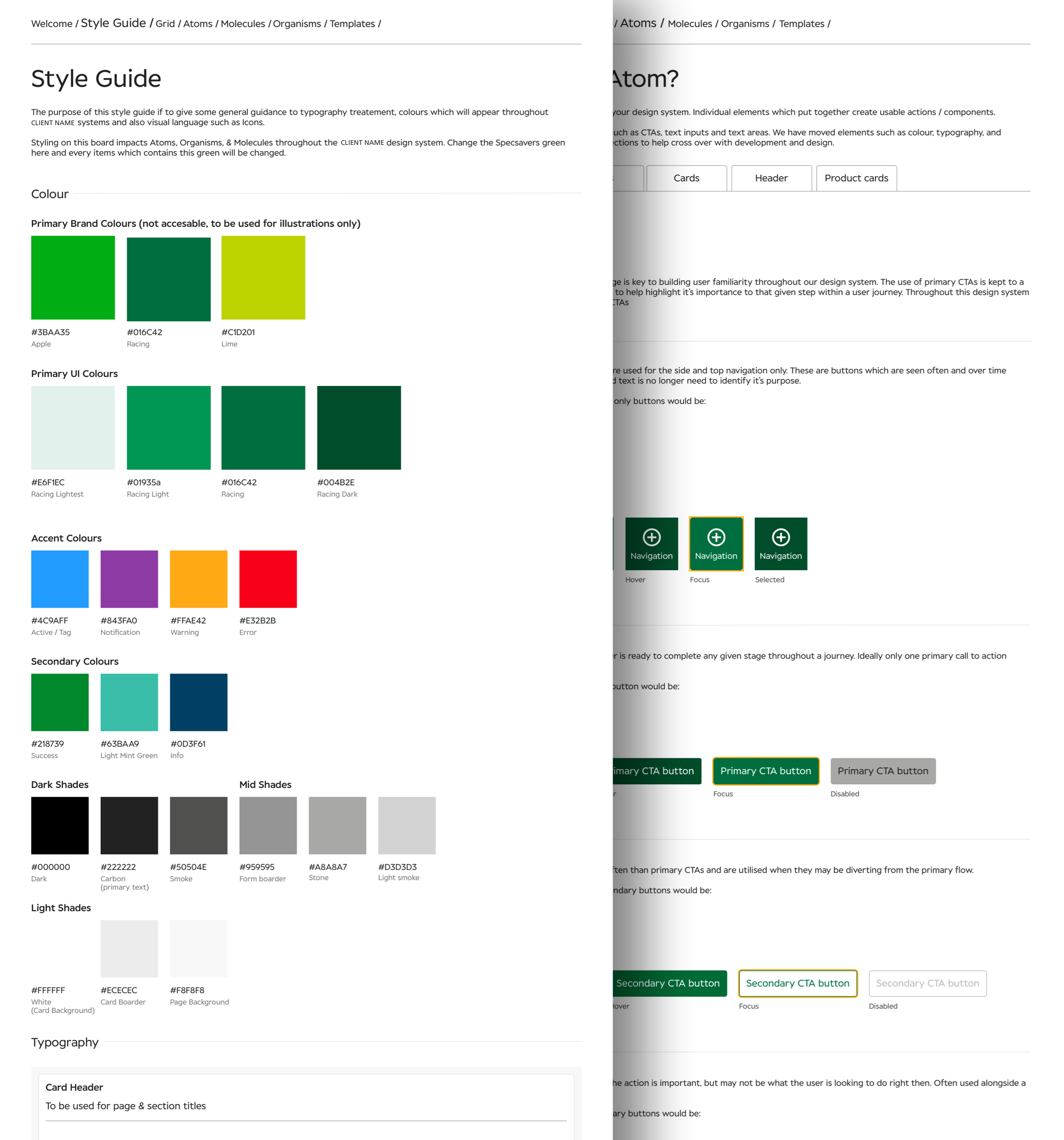SPECSAVERS Customer Service Sytem (S.C.S.S.)
Designing a new model for the progression of customers through an in-store experience at a leading high-street optometrists' practice.

Challenge
The in-store system used by staff at a leading UK optician, developed in 2005, had become increasingly ineffective due to an outdated interface and obsolete technology. With the system scheduled for decommissioning, the client sought to replace it with a sustainable, cloud-based solution in Azure.
BJSS supported the client in defining an approach and framework to deliver digital, user-centric customer experiences across 10 global markets. This included introducing new methodologies for employees across multiple functions.
Store revenue was closely tied to the speed and quality of the customer journey—from arrival through eye testing to product dispensing. The supporting systems and IT infrastructure were therefore critical to ensuring efficient throughput, positive customer experiences, and ease of use for staff.

Developing a global design system for the client was key to ensuring a consistent design approach especially when we have multiple design and delivery teams working on the same product concurrently.
What we did
Discovery and research
Working with partners, employees, and customers, BJSS’ multidisciplinary team conducted face-to-face interviews, in-store observations, and surveys across 15 stores. Mystery shoppers also mapped staff–customer interactions to build a holistic, step-by-step view of the in-store experience.
A typical customer journey followed these steps:
- The customer arrived for a pre-booked appointment.
- They were greeted and checked in by a colleague using the system.
- An optician conducted the assessment, recording clinical data in the same system.
- The customer was processed through the point-of-sale software to complete payment, after which the colleague moved to the next customer.
However, colleagues had developed multiple workarounds to compensate for the poor usability of the legacy system, including:
- Circumventing GDPR requirements.
- Manually transferring customer data between disparate system instances.
- Writing customer data on paper to move them between the retail, clinical, and dispensing stages.
These practices increased the time required to complete basic tasks, making task duration a critical performance indicator for evaluating the effectiveness of the proposed solution.
It was also noted that store colleagues (users) had developed a number of workarounds to account for the poor usability that had been incorporated into the legacy system. The following were included, although not limited to:
- The circumvention of General Data Protection Regulation (GDPR) requirements.
- The transposition of customer data from one component of the service to another across disparate system instances.
- The inscription of customer data on physical paper to facilitate the transition of a customer from the retail, to the clinical, to the dispensing components of the in-store journey.
The aforementioned instances resulted in an augmentation of the time required to execute fundamental tasks. Consequently, they became a pivotal performance indicator for the efficacy of our proposed solution.
Translating research into a strategy
Research highlighted that the solution needed to address the following requirements:
- Browser- and cloud-based: replacing the locally installed legacy system, which was difficult to maintain and update.
- Accessibility: adhere as closely as possible to WCAG 2.0 standards.
- Hardware compatibility: function on existing in-store devices, including 2005-era touchscreens, second-edition 1024 iPads, and mouse/keyboard desktops running various browsers.
- Brand alignment: comply with client digital brand guidelines.
- Minimised retraining: respect learned behaviours of store colleagues to reduce change management costs.
- Global scalability: robust enough for deployment across multiple markets and languages.
- Balance of innovation and familiarity: integrate emerging technology and design best practice while maintaining recognition of established user behaviours.
- Flexible workflows: accommodate both linear customer journeys and asynchronous processing, allowing staff to begin at any stage of the journey.
Design and testing
The BJSS design team created clickable Axure prototypes of the proposed journey, which in-store colleagues used to test and refine the customer experience. Where possible, senior stakeholders joined these sessions, giving them first-hand insight into the challenges faced by store colleagues. This approach accelerated approval of several key design decisions.
Service blueprints were developed to map the complex, multi-channel customer experience, supported by design principles to ensure consistency across elements such as typography, colour, and logos. The existing style guide, focused mainly on offline marketing, was not suitable for digital use.
BJSS therefore recommended creating and maintaining a digital design system aligned with the client’s brand but optimised for accessibility and usability. This presented a strategic opportunity to standardise the online brand more effectively. The system was then used to deliver high-fidelity design assets to delivery teams via Sketch and Abstract.
To support delivery, BJSS documented consistent ways of working, introduced agile best practices, and produced initial wireframes with a focus on consistency, alignment across suppliers, and upskilling client teams.
Designers were embedded across multiple multi-disciplinary, multi-supplier teams, each responsible for different parts of the in-store journey. However, varying methodologies and dispersed locations made collaboration and consistency difficult. To address this, BJSS worked with the client to establish and integrate service design best practices and UX functions within agile product teams across this complex supplier landscape.
The result was a streamlined, frictionless design-to-development pipeline that significantly improved delivery velocity.

Specsavers design system.
My role
In my capacity as a consultant at SPARCK/BJSS, I collaborated with both design and delivery team members on a permanent basis. My role was that of Lead Designer. The responsibilities entailed:
Outcomes
Following the conclusion of the Discovery/Design phases (equivalent to Alpha and Beta), BJSS proceeded with Live delivery, achieving an increase in appointment bookings, a reduction in no-shows, enhanced in-store customer engagement, and elevated customer satisfaction.
